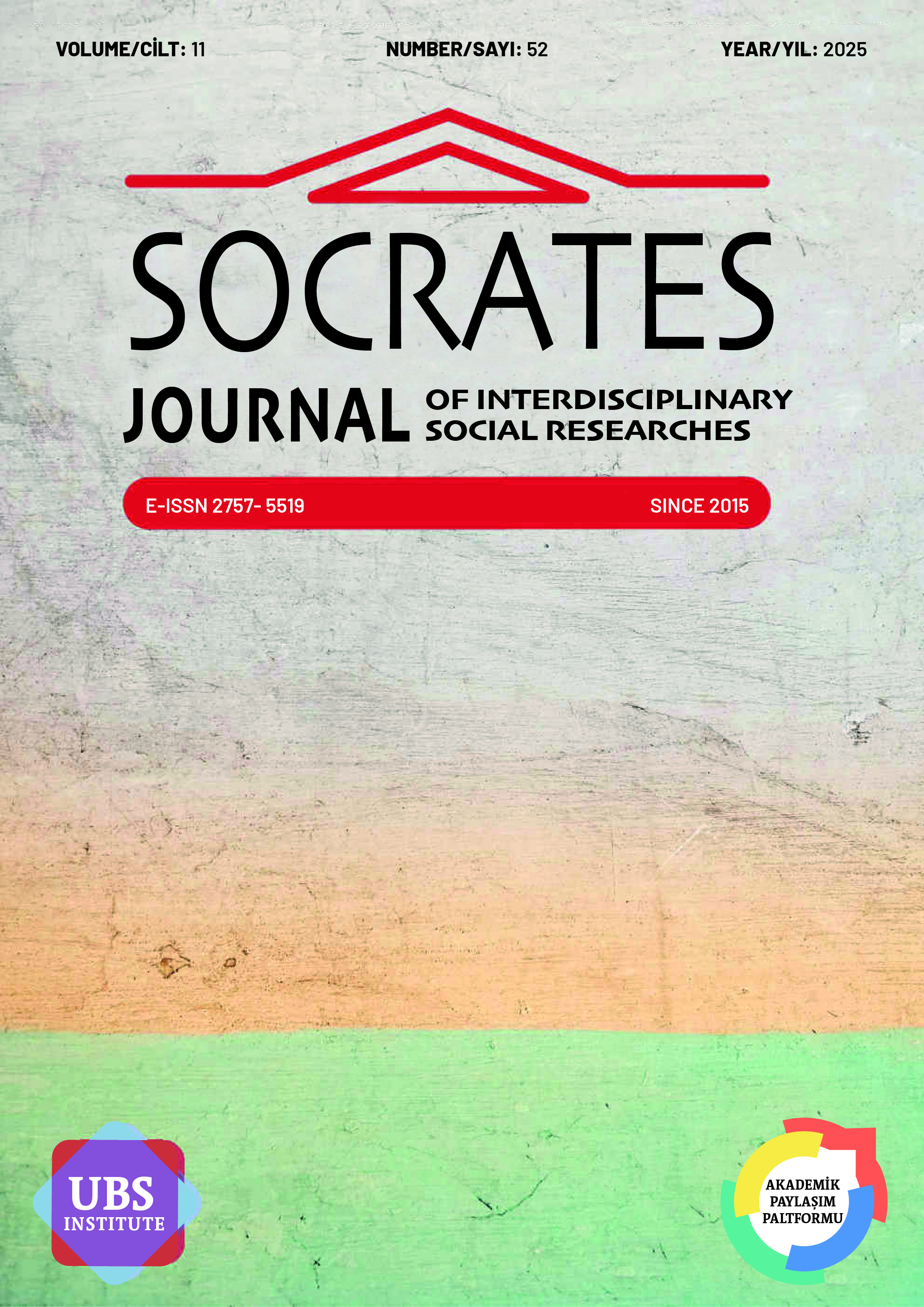WATER CULT OF DİVRİĞİ DESTINATION WITHIN THE SCOPE OF HEALTH TOURISM
SAĞLIK TURİZMİ KAPSAMINDA DİVRİĞİ DESTİNASYONUNUN SU KÜLTÜ
DOI:
https://doi.org/10.5281/zenodo.15316275Keywords:
Health Tourism, Divriği, Balneotherapy, Healing WaterAbstract
Within the scope of health tourism, balneotherapy (healing with water) is a type of treatment method preferred as an alternative to the protocols used by modern medicine in the treatment of diseases today. The tradition of using sources, mineral springs, hot springs and springs believed to be healing in various destinations around the world in the treatment of certain diseases has been going on for centuries. The aim of this study is to indicate that the destination of Divriği, which has the necessary ground for the realization of many types of tourism, also has a certain potential within the scope of health tourism. There are many water sources believed to be healing in the destination of Divriği, most of which are in rural areas. The healing power of these waters, which are frequented by patients, is based on the belief of the people who visit that the water is healing. Health tourism continues to be an important type of tourism in our country as well as in the world. It is thought that the Divriği district of Sivas will contribute positively to the district's tourism income by using this potential. In order to ensure the continuity of tourism consumers who come to the district for various reasons such as healing, finding peace or fulfilling a vow and to fulfill sustainable tourism goals, both the public and private sectors need to determine the road map of the district's tourism in an interactive and coordinated manner as soon as possible.
References
Bai, R., Li, C., Xiao, Y., Sharma, M., Zhang, F., & Zhao, Y. (2019). Effectiveness of spa therapy for patients with chronic low back pain: an updated systematic review and meta-analysis. Medicine, 98(37), e17092.
Botoș, A., Stăncıoıu, A. F., Radu, A. C., & Pârgaru, I. (2017). Youngsters’ opinions on health, health tourism and balneotherapy tourism. International Journal of Academic Research in Economics and Management Sciences, Vol. 6, No. 2.
Brito, M., & Silveira, L. (2024). Water, health and well-being, and tourism: analysis of a triangular relationship in Portugal. Tourism Recreation Research, 1-11.
Chang, L., & Beise-Zee, R. (2013). Consumer perception of healthfulness and appraisal of health-promoting tourist destinations. Tourism Review, 68(1), 34-47.
Carbajo, J. M., & Maraver, F. (2018). Salt water and skin interactions: new lines of evidence. International journal of biometeorology, 62, 1345-1360.
Carmen, I., Alexandrina, S., & Iuliana, C. (2016). Coordinates of developing the balneary tourism. Management Strategies Journal, 31(1), 308-316.
Connell, J. (2013). Contemporary medical tourism: Conceptualisation, culture and commodification. Tourism management, 34, 1-13.
Fioravanti, A., Karagülle, M., Bender, T., & Karagülle, M. Z. (2017). Balneotherapy in osteoarthritis: facts, fiction and gaps in knowledge. European Journal of Integrative Medicine, 9, 148-150.
Gáti, T., Tefner, I. K., Kovács, L., Hodosi, K., & Bender, T. (2018). Erratum: Correction to: The effects of the calcium-magnesium-bicarbonate content in thermal mineral water on chronic low back pain: a randomized, controlled follow-up study. International Journal of Biometeorology, 62(5), 907-907.
Gutenbrunner, C., Bender, T., Cantista, P., & Karagülle, Z. (2010). A proposal for a worldwide definition of health resort medicine, balneology, medical hydrology and climatology. International Journal of Biometeorology, 54, 495-507.
Hall, C. M. (2011). Health and medical tourism: a kill or cure for global public health?. Tourism review, 66(1/2), 4-15.
Hritz, N. M., Sidman, C. L., & D’Abundo, M. (2014). Segmenting the college educated generation Y health and wellness traveler. Journal of Travel & Tourism Marketing, 31(1), 132-145.
Illich, I. (1975). Némésis médicale (Vol. 9, pp. 351-364). Paris: Seuil.
Ivanišević, G. (1999). Marine remedies of the island of Lošinj-the basis for the development of health and spa tourism. Turizam, 47, 132–149.
Kušen, E. (2002). Health tourism. Tourism, 50, 175-188.
Laesser, C. (2011). Health travel motivation and activities: insights from a mature market-Switzerland. Tourism Review, 66(1/2), 83-89.
Matsumoto, S. (2018). Evaluation of the role of balneotherapy in rehabilitation medicine. Journal of Nippon Medical School, 85(4), 196-203.
Milićević, S., & Jovanović, D. (2015, October). Wellness tourism–competitive basis of European health tourism destination. In DIEM: Dubrovnik International Economic Meeting, 2(1), 851-863.
Moreno-González, A. A., León, C. J., & Fernández-Hernández, C. (2020). Health destination image: The influence of public health management and well-being conditions. Journal of Destination Marketing & Management, 16, 100430.
Morer, C., Roques, C. F., Françon, A., Forestier, R., & Maraver, F. (2017). The role of mineral elements and other chemical compounds used in balneology: data from double-blind randomized clinical trials. International journal of biometeorology, 61, 2159-2173.
Oestigaard, T. (2017). Holy water: the works of water in defining and understanding holiness. Wiley Interdisciplinary Reviews: Water, 4(3), e1205.
World Tourism Organization & European Travel Commission (WTO & ETC). Exploring Health Tourism-Executive Summary; UNWTO: Madrid, Spain, 2018.
Yang, J. Y., Paek, S., Kim, T., & Lee, T. H. (2015). Health tourism: Needs for healing experience and intentions for transformation in wellness resorts in Korea. International Journal of Contemporary Hospitality Management, 27(8), 1881-1904.
Downloads
Published
How to Cite
Issue
Section
License
Copyright (c) 2025 Socrates Journal of Interdisciplinary Social Studies

This work is licensed under a Creative Commons Attribution 4.0 International License.


